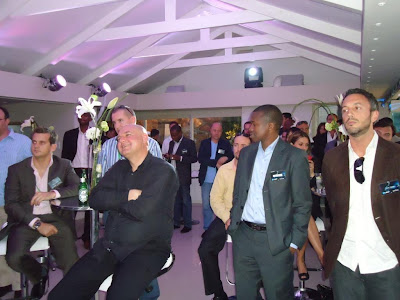
Suhail Bhat, MEF Policy & Initiative Director, set the scene by speaking briefly about applications from the perspective of MEF’s current work on Smart Enablers and M-Commerce. “Apps must be simple, relevant and contextual,” stated Suhail, adding that there are also important issues surrounding in-app billing, a subject which was the focus of a recent Ofcom ruling.
“Monetisation & In App Billing”
“Monetisation is key, otherwise as a start-up you face death!” was the dramatic opening statement from Flirtomatic’s CEO Mark Curtis. With at least 5 platforms to deal with, Curtis emphasised the need to work with partners to deal with the complexity. He also advised the audience to “Watch out for HTML5” with regard to mobile web applications.

So-called ‘vanity tools’ such as ‘Delete your freak’ and ‘ego boost’ offer opportunities for Flirtomatic users to pay to boost their ratings and profiles. This is crucial given the social networking company’s focus on the KPI of conversion to payment.
His presentation also covered different billing routes including: iTunes, carrier integration, Paypal, as well as a “new breed of integrator” typified by companies like Boku and Zong, which both have Android “1 click billing”.
One audience member asked about the reasons for the high levels of failed payment transactions – which can lead to anything from 25-50% of failed transactions. “Often this is down to lack of credit on pre-pay phones but it can also be due to network drop-outs or numerous other reasons,” explained Curtis.
Another attendee asked how Flirtomatic compare themselves to their competitors such as Match. “We don’t view Match as competition,” replied Curtis, “since we have different business models – theirs is based on subscriptions. Besides we’re about flirting not dating,” he added, pointing out how many times people (and here he included himself) flirt during the course of their day.
“Using Apps to Drive Revenue & Extend Your Brand”

Neil Johnson from A&N Media (a division of Daily Mail & General Trust) began his presentation with a quick overview of Metro’s readership, dubbed “City Clickers”. “The average age of our readers is 35 years, they’re twice as likely to have an iPhone and over 50% own a smartphone,” said Johnson.
Metro Apps is the brand and website for the publishing group’s applications which focus on transport and games, although Phrasebook apps, aimed at the “fly and flop” traveller, have also proved popular. “An example of a travel app is ‘Cabfinder’ which uses LBS to show minicab firms in your area. The app is free and there’s a revenue share earned from each call,” explained Johnson.
Responding to an audience question, Johnson conceded that the business model for Metro Apps relies on their ability to cross promote using the publishing assets at A&N Media’s disposal.
He added that Metro is also experimenting with QR Codes which can be scanned by smartphones and provide a link to say a Youtube clip. This is being used for a game entitled Super Yum Yum 3 with the entertaining tagline: “Revenge doesn’t get fruitier than this!”
MIG’s David Glennie concluded with a presentation on market fragmentation, pointing out, “Fragmentation is always viewed in a negative way, even though it’s caused by innovation (which generally has positive connotations).” Glennie suggested that HTML5 could solve many fragmentation issues and is set to revolutionise the mobile web. It would also appear that the future is coming faster than we think. As an example of the speed of change affecting mobile, Glennie pointed to a prediction made earlier this year by Morgan Stanley’s Mary Meeker that smartphone sales would overtake sales of new pcs by 2014. This prediction has now been revised to actually happen by 2012…






